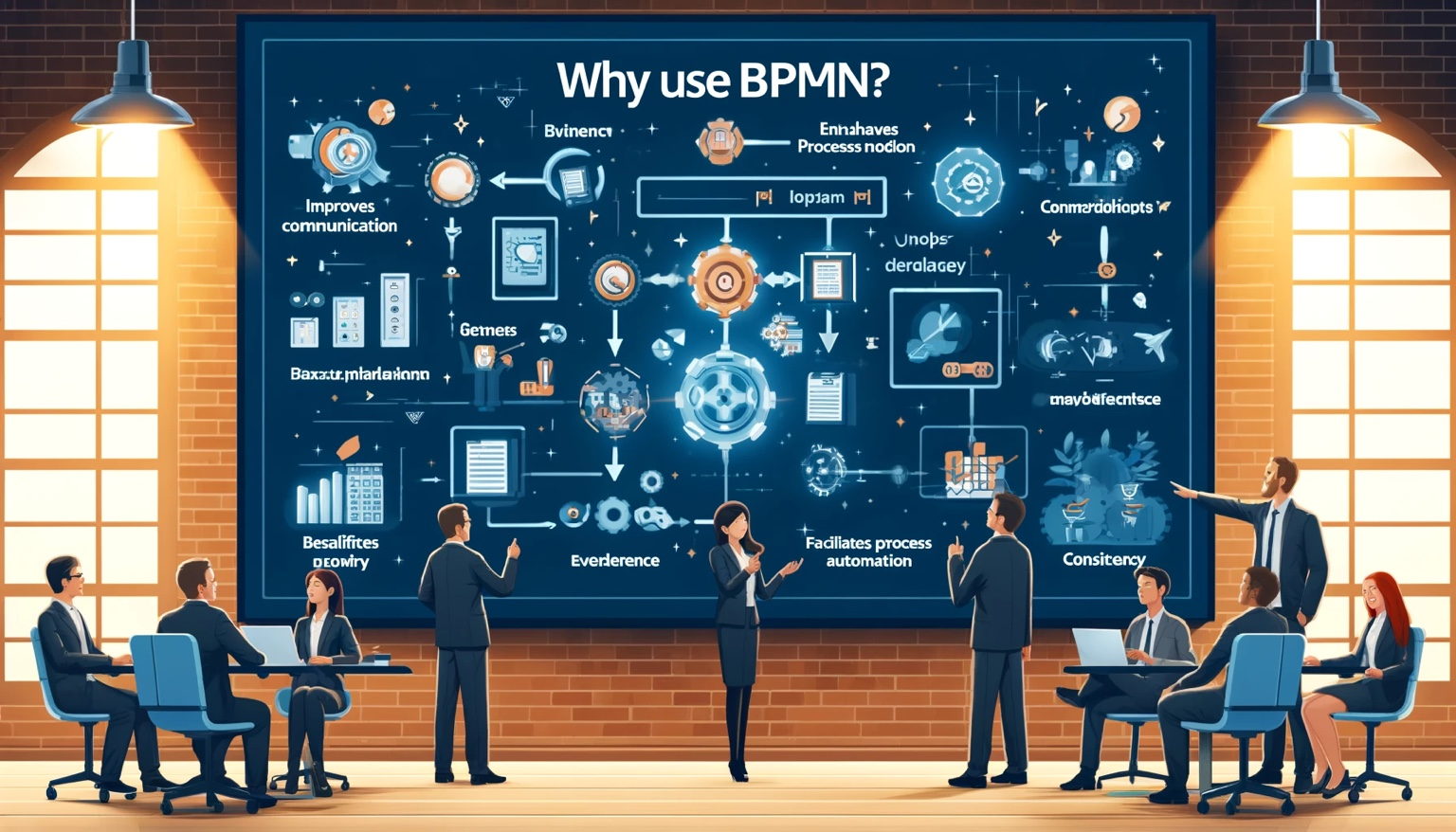
Image created with ChatGPT
You have to have your processes under control
I still remember this sentence. It comes from the time when I worked at sum.cumo. I heard about BPMN (Business Process Model Notation) for the first time in 2014. Ultimately, I thought it was another way of creating flowcharts. It wasn’t immediately obvious to me that it was a powerful tool - if you use it correctly.
As with many other methods or process models, you have to live and use BPMN. If the management does not force the modelling of processes with BPMN itself, the implementation will fail. This is why OKR, for example, often does not work.
At Cleo & You I pursued the goal of modelling our processes with BPMN from day one. I was able to win over a great mentor for us. Marcin Pankowski has many years of experience and is a “process nerd” in a positive sense. I am happy to say that we have created a BPMN culture in which everyone immediately opens the BPMN editor when it comes to modelling a new process.
But it doesn’t stop there. The BPMs are executed in a process engine and communicate with our software at the appropriate points. We are currently taking a closer look at Bonita as an open source solution.
Key statements on why you want to use BPMN
I have summarised the key statements here as to why you want to use BPMN.
1. common language
BPMN offers a standardised language that is understood by both business units and programmers. This facilitates communication and ensures that everyone involved has the same understanding of the process.
2. avoidance of misunderstandings
The clear and uniform presentation of processes minimises misunderstandings between the business units and the IT department. Each step of the process is clearly defined and documented.
3. automation
BPMN enables the automation of business processes. The modelled processes can be executed by BPMN engines such as Camunda or Cogito, which increases efficiency and reduces errors.
4. transparency and traceability
The visual representation of processes in BPMN increases transparency. Processes can be easily traced and adjusted if necessary, leading to better control and optimisation.
Efficient process design
BPMN helps to clearly structure and standardise processes. This leads to more efficient workflows and faster implementation of changes.
6. integration of business and IT
BPMN promotes close co-operation between the business and IT departments by creating a common basis for the discussion and development of processes.
7. scalability
BPMN is suitable for organisations of all sizes and can be used for both simple and complex processes. It is flexible and can be adapted to the needs of the organisation.
8. continuous improvement
The use of BPMN enables continuous monitoring and improvement of processes. Companies can constantly increase their efficiency through regular analyses and adjustments.
Roundup
By implementing BPMN, we as a company will be able to better manage, optimise and automate our business processes. This will ultimately lead to greater efficiency and improved competitiveness.
Why don’t you think about using BPMN … If you need help, contact me.